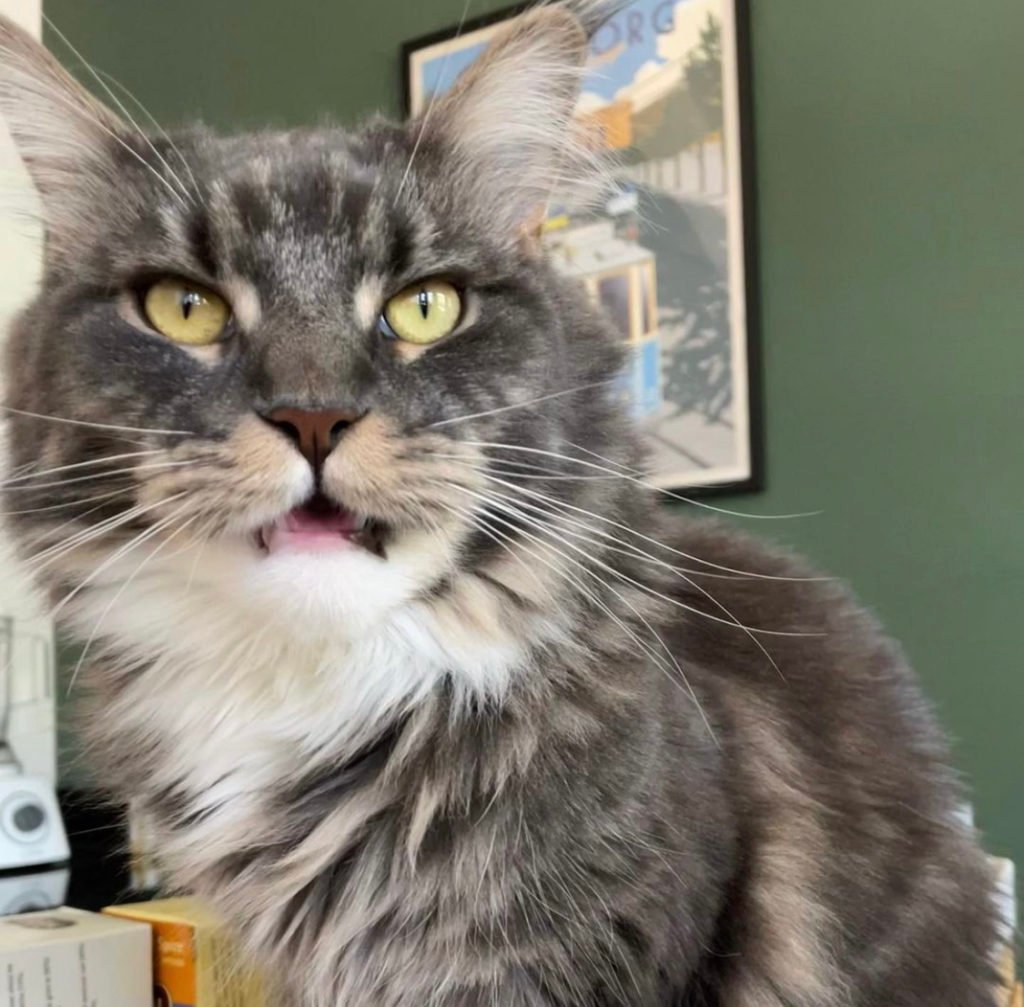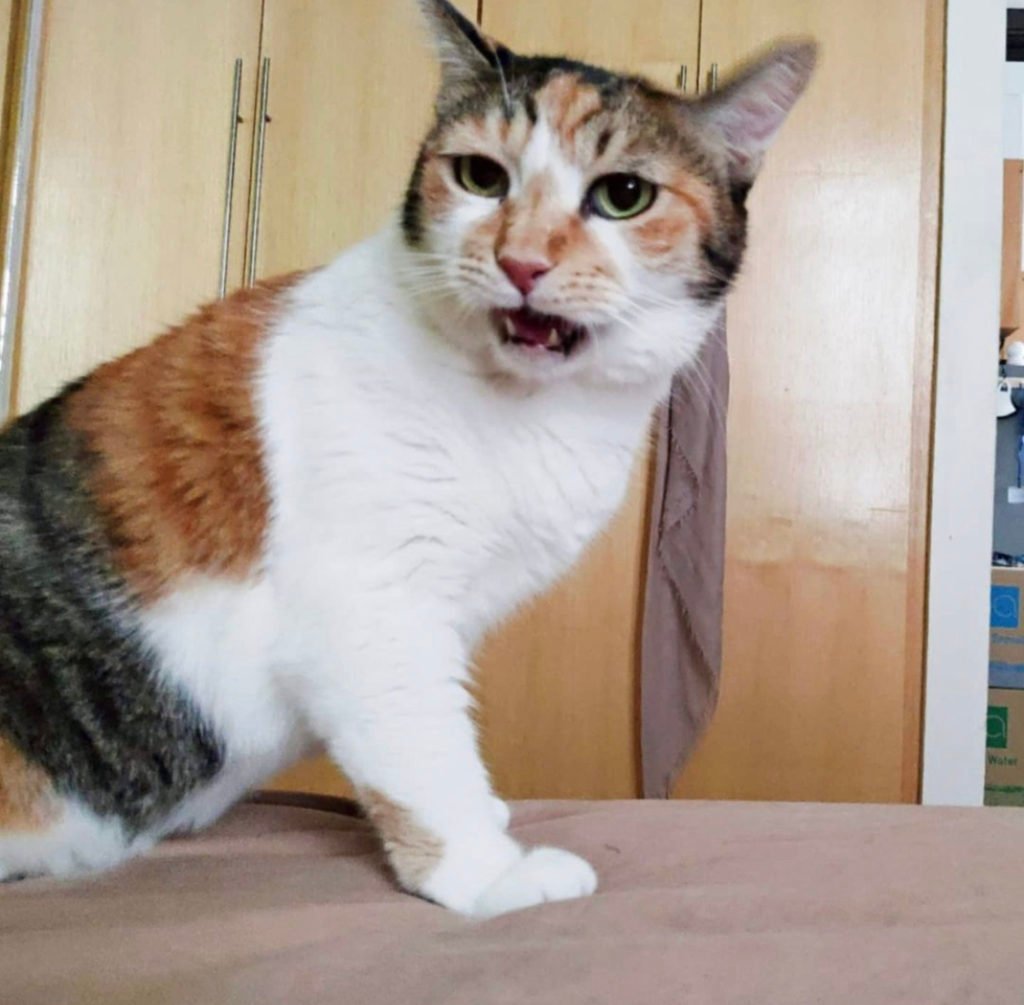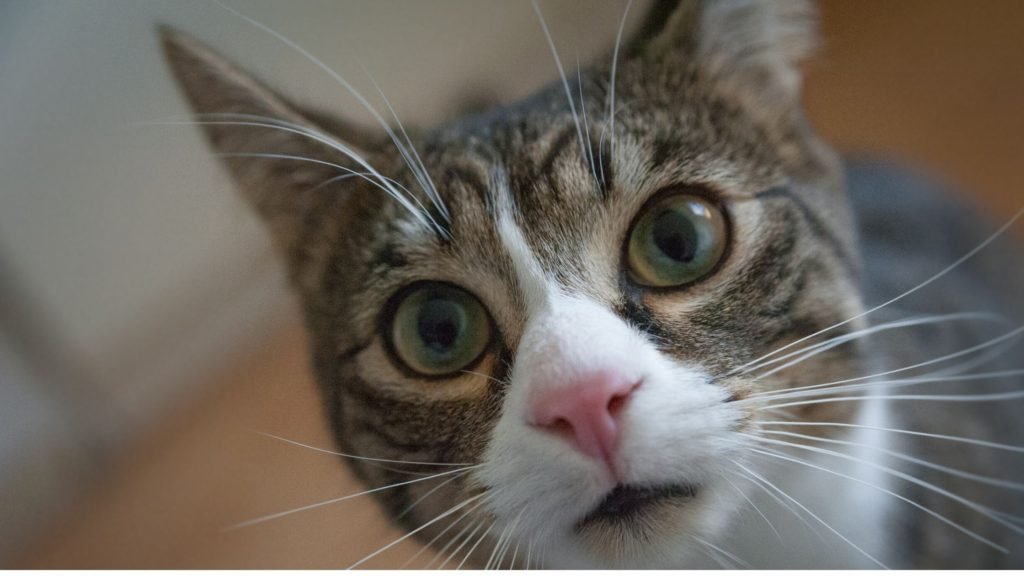Flehmen response cat behavior uncovers a fascinating aspect of feline life to gain insights into how cats detect and interpret the scents in their world.
The Flehmen response is a unique phenomenon seen in felines and other animals. Identifiable by how they draw air in through their nostrils, raise their heads, and curl their top lips. This unique action allows them to analyze scent particles more effectively and gather essential information from their environment.
Perfect Scents: Feline Flehmen Functions

In cats, the Flehmen response is a necessary form of chemical communication, helping them detect pheromones, assess territorial boundaries, and identify potential mates. By utilizing their highly specialized vomeronasal organ, cats can gain crucial insights into their surroundings and make informed decisions based on the scents they detect.
Sniff & Savor: Flehmen Response Cat Exploration
This blog post will delve into the intriguing world of the Flehmen response in cats. We’ll explore the Flehmen response’s anatomical components, mechanism, role in feline communication, and parallels to other species. Our goal is to provide a comprehensive understanding of this fascinating aspect of feline behavior.
Anatomy of the Flehmen Response

Feline Scent Sleuths: VNO’s Vital Role.
The vomeronasal organ, also known as Jacobson’s organ, is a specialized scent-detection structure located on the roof of a cat’s mouth. The Flehmen response relies on this little, tubular organ to capture and analyze smell molecules, giving cats critical environmental information.
VNO & Flehmen: A Dynamic Duo.
During the Flehmen response, the VNO works with a cat’s olfactory system to detect and process scent particles. When a cat has the Flehmen response, its VNO opens, enabling smell molecules to enter. The VNO then sends this information to the brain, interpreted and used to guide the cat’s behavior.
Whiskered Whiff Wizards: Feline Olfactory Mastery.
Cats possess a highly developed olfactory system, which includes the central olfactory epithelium in their nasal cavity and the VNO. These two parts detect and interpret scents, helping cats hunt, communicate, and locate. Cats use their exceptional sense of smell to interact with and comprehend their surroundings, as shown by the Flehmen reaction.
You May Also Interest: Why Your Cat is Getting Hairballs and How to Prevent Them
Flehmen Response Cat Process

Feline Flehmen Fodder: Scent Stimuli.
Various stimuli can trigger the Flehmen response in cats. Familiar scents that elicit this behavior include those from other cats’ urine, feces, or scent glands and pheromones released by female cats in heat. Additionally, some cats may exhibit the Flehmen response when encountering strong or unfamiliar smells.
Grimace & Grin: The Flehmen Face.
A cat’s Flehmen reaction involves lifting its head, opening its mouth slightly, and curling its top lip. This expression allows the cat to draw scent particles into their VNO and facilitates detecting and analyzing the scents. The Flehmen response may last for several seconds as the cat processes the information obtained from the smell.
Sniff, Savor, Solve Flehmen’s Scent Secrets.
During the Flehmen response, scent particles enter the VNO through ducts located in the roof of the cat’s mouth. The VNO’s sensory receptor cells bind smell molecules and provide electrical impulses to the cat’s accessory olfactory bulb. The cat processes and interprets this information to make judgments depending on the scent’s origin, purpose, and probable behavioral effects.
You May Also Interest: All You Need To Know: Male Cats vs Female Cats Pros and Cons
Flehmen Response Cat Communication

Scent Savvy: Flehmen & Feline Territories.
The Flehmen response plays a crucial role in feline territorial marking and communication. The Flehmen response lets cats identify and mark their territory with odors. Cats may avoid disputes and preserve social hierarchies by studying smell markings to identify other cats.
Pursuing Love: Flehmen & Feline Mating.
The Flehmen response is an essential component of feline mating and reproduction. Male cats use the Flehmen response to detect pheromones released by females in heat, signaling their readiness to mate. This olfactory information helps male cats locate and identify potential mates, ensuring the continuation of their species.
Whiskered Whiffs: Social & Behavioral Impact.
The Flehmen response has significant social and behavioral implications for cats. Cats use fragrance information to understand social dynamics, avoid disputes, and create bonds with other cats. Additionally, the Flehmen response enables cats to assess potential threats and adapt their behavior accordingly. Understanding the Flehmen response helps pet owners and researchers gain valuable insights into feline communication and behavior.
You May Also Interest: Can Weather Affect Cats Behavior? Discover The Truth
Flehmen's Response to Other Animals
Flehmen Fanfare: Mammalian Whiff Wonders.
Cats, horses, elephants, and ungulates like deer and antelope demonstrate the Flehmen reaction. Although the expression of the Flehmen response may vary slightly between species, the underlying mechanism and purpose remain primarily similar: detecting and interpreting scent information to inform behavior and decision-making.
Whiff Wonders: Flehmen’s Diverse Display.
Despite the similarities in the Flehmen response across various species, some differences exist in its purpose and expression. In some animals, like horses and elephants, the Flehmen response may play a more prominent role in detecting reproductive readiness. In contrast, it might be more focused on territorial communication with others. Many animals display the Flehmen reaction with distinct facial expressions.
Cat Chat: Flehmen’s Vital Role.
The Flehmen response is a critical aspect of feline communication, allowing cats to detect and interpret essential scent information from their environment. This activity helps cats manage social hierarchies, create territories, and find mates, ensuring their survival and well-being.
Flehmen Fascination: Gaining Insight.
By understanding the Flehmen response in cats, we can gain valuable insights into their unique methods of communication and behavior. This knowledge can help pet owners better understand and care for their feline companions. While also providing researchers with a deeper appreciation of the complexities and nuances of the animal kingdom.

